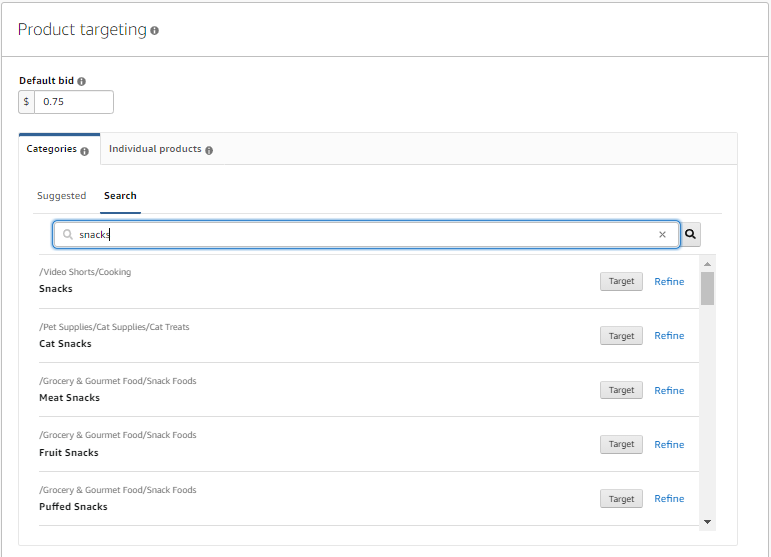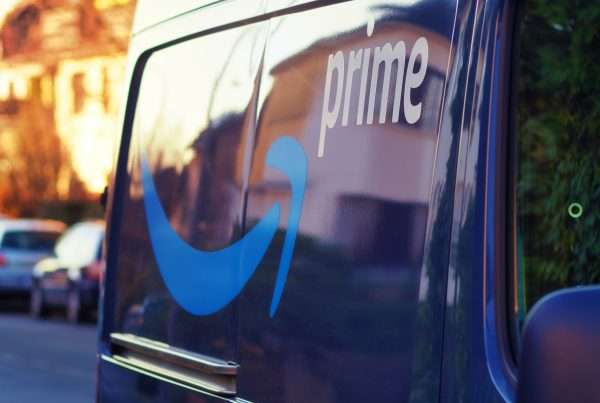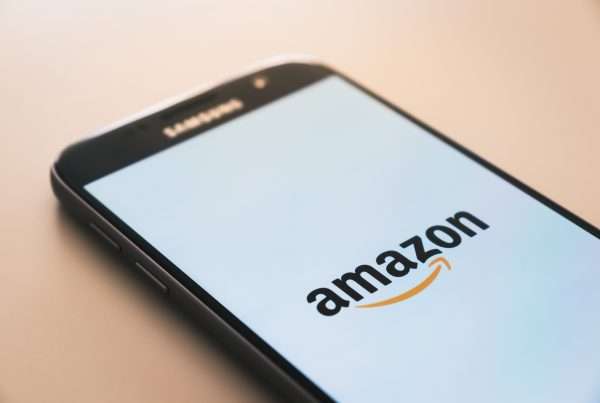We do our fair share of audits of Amazon advertising accounts at Logical, and though we personalize each one to the individual client, we’d be lying if we said each account were unique in its pain points. In fact, it’s often the case that accounts both mature and immature suffer from a lot of the same problems.
But we care, and that’s why we’ve compiled a list of the most common mistakes we see in an Amazon advertising account:
5. No Product or Category Targeting
Product targeting (sometimes called “PAT”), and its big brother Category targeting are very often neglected, even for successful accounts. While you can certainly create a streamlined account by ignoring them altogether and relying solely on keywords, you’re missing out on an opportunity unique to Amazon.
Product and category targeting ads help shoppers discover your product on Amazon detail pages, which already is an advantage because they’re at the moment of either research or purchase, i.e., the perfect moment to hit them with an ad.

But we get it — you may have tried Category or Product targeting in the past and not seen a great return. Fair enough. But if you’re looking to grow your market share, these are a necessity. If you’ve ever looked at a Market Basket report, you may see your shoppers buying some other items far outside of your product’s category — books, dog food, books about dogs writing about food, whatever. These are complements to your products, and Category and Product targeting is the best way to start showing your ads to shoppers outside your Amazon aisle.
4. Sponsored Video only for Branded
This is a surprising trend we’ve seen in the last few months: prospects have a diverse set of campaigns, which is great. They even have video campaigns. Even better. Then we look at their keywords: They’re all the prospect’s brand name; not a single non-branded target or competitor name in sight. Mind boggling.
To back up, Sponsored Brand Video has been around for over a year, and we had a huge success with it in the second half of 2020. Since then, other advertisers have added video to their AMS campaigns, raising costs per click and levelling out the first-mover advantage. Still, it’s a great complement to those other keyword and product campaigns when used correctly.
And that brings us back to the trend.
Why keep those beautiful (and costly) videos limited to your current customers? It’s like seeing a preview for the very movie you’re about to watch: I’ve already bought my ticket, why are you still trying to sell me on it?
Sponsored Brand Video should be a gateway to your brand, so you should — at the very least — be showing it to people who don’t know your brand. Likewise, this is the tallest soapbox AMS will give you for preaching your brand’s message, so get it in front of new eyes.
3. No Negatives in Automatic Campaigns
Automatic campaigns are easy to set up, can start making sales quickly, and are based on Amazon’s understanding of what works, advertising-wise, for your products, which is why they’re so popular with Amazon advertisers. The drawback is that they can be very inefficient, because you have almost no control over what they choose to target.
The one lever you have for control is negatives, and Automatics are unique in that they allow you to exclude both keywords and products. It’s simple, it’s effective, and it’s boring, which is why very few advertisers do it. But they should.
So, if you’re like us and use Automatics for finding new keywords and products to target in your manual campaigns, you need to be adding negatives consistently.
2. Too Much Branded Spend
The most common question we hear from prospects is either “Why have my sales plateaued?” or “Why have my sales dropped so much?”
And that question is typically followed up by the innocent comment that, “It’s weird because my ad account is so efficient.”
That’s a clear indication that the ads are showing mostly to Branded targets (the brand name and the brand catalog). This is a big problem for a lot of reasons — the biggest being that you’re spending your ad budget on shoppers who would have purchased anyway.
The second biggest is that people who know your brand and people who don’t behave a lot differently when it comes to making a purchase. People who know your brand are going to be exponentially more likely to purchase your product, so it’s going to cost less to sell them (or defend yourself against competitors). People who don’t know your brand will take some more convincing, and so it’s going to cost more.
So when an ad account appears to be super efficient, it may be the case that little money is being spent actually growing the brand, and, as a result, total sales either stay the same or dry up.
1. Confusing Structure
Like “obscenity,” this one is difficult to define but you know it when you see it.
Here’s a test: Log into your Amazon ad account and list off the campaign names. Chances are, you’ll see something like the following:
“top performers”
“PAT | Widgets | Competitor”
“Sponsored Brands | Brand Defence | Top”
“Campaign 6/17/2017”
“Automatic”
“secret solstice sale”
“bob’s campaign from 2019?”
Now, from this (or whatever’s staring back at you), can you easily tell what the purpose of each campaign is? How well they’re fulfilling those purposes? Whether they’re overlapping with other campaigns?
If not, then you may want to rethink your account structure, because a lack of clear and descriptive names almost always translates to a lack of overall organization. That in turn means that there’s probably a lot of wasted spend.
Even if the names make sense to you, consider standardizing them to include the goal, targeting, and products advertised. It will make reporting much easier and minimize the risk of overlap (and thus higher costs per click).
Agencies like us love to see accounts like these because they read as a step-by-step guide for an audit. Don’t believe us? Here’s what runs through our heads when looking at the above campaign names:
top performers means that someone has taken care to review converting search terms and product targets and isolated them into a single campaign. Check the products advertised in this campaign because it probably has every item in the catalog, and the costs per acquisition will be highly varied.
Sponsored Brands | Brand Defence | Top must have been created by a British agency the client worked with at one time. The targets will be branded and have been optimized, but it’s odd that the client didn’t mention working with an agency previously. This is going to be an efficient, low-cost, high-performing campaign, but the ad copy may be outdated.
Campaign 6/17/2017 is probably a campaign that was recommended and created by Amazon (because that’s about how Amazon names its auto-recommended campaigns). This means that there’s going to be a mix of branded and non-branded terms in the campaign, most of the keywords are probably being competed on elsewhere. This will be a highly inefficient campaign that generates a lot of sales due to high bids and very broad targets.
secret solstice sale was created to promote a temporary sale anywhere from several minutes to millennia ago and did well during the time. Because of that, it’s been left running in the hopes that someday it will perform well again. Pause this immediately.
PAT | Widgets | Competitor advertises the Widget product line using competitor products as targets. This is an important campaign to continue running even if the ACoS is high.
Automatic was the first campaign created in the account. The client no longer sells the product this campaign was created to advertise, but Amazon’s best practices recommended running an automatic campaign, so it’s been left on. No one has ever optimized this campaign.
bob’s campaign from 2019? Bob is the CEO, and these are keywords he thought of in the shower one morning.
Does your account suffer from any of these five? Or do you have other difficulties with AMS? Either way, let us know and get your free account audit from Logical today — just don’t say we didn’t warn you.








